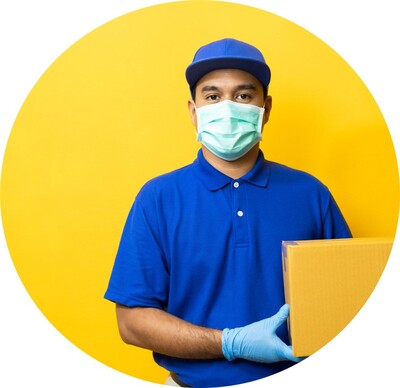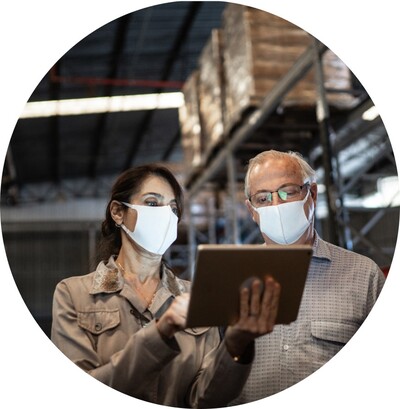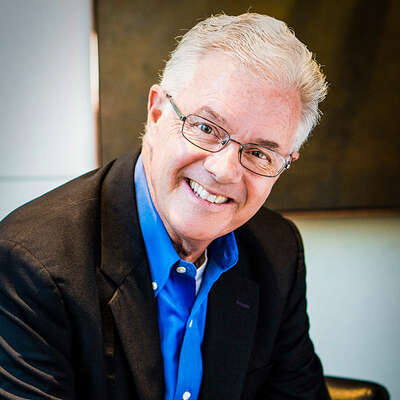Perspectives from Boyden's Consumer Products Experts
As the grip of COVID-19 continues to have a global impact, Boyden is tapping into the deep collective knowledge base of our partners to bring industry insights and prescriptive learnings to the forefront.
In this issue of Resilient Leadership, Boyden shares the expert opinions of our consumer products leaders from across the globe: Judit Szalóky Tóth (Hungary), Henrik Harbo (Denmark), and Doug Ehrenkranz (United States).
In conversation with Boyden’s Global Consumer & Retail Practice Leader, Cornelia Tänzler (Switzerland), the group explores shifts in consumer behaviours, industry disruptors, emerging opportunities, and the evolving leadership skillset to deliver.
Tänzler: The consumer products industry experienced a great surge as a result of COVID-19. What are the top effects realized as a direct result of the pandemic?

Harbo: COVID-19 boosted the online strategy of most retailers. The retailers were present online before COVID-19. However, the underlying trends in consumer behaviour in the direction of online shopping have indeed been the top effect of the pandemic. Some have stated that COVID-19 advanced their online strategy significantly, shaving years off to meet today’s digital demand. As to consumer products manufacturers, this has impacted their ability to handle supply chain – especially how they support online-related businesses.
Szalóky Tóth: Consumers are living differently, buying differently, and in many ways thinking differently. Consultancy firms such as Accenture, KPMG, Nielsen, McKinsey, and others predict that some of the new habits and attitudes will endure beyond this crisis. Changes driven by health fears, economic concerns, consumer confidence, and new living-working and lockdown realities continue to impact what, where and how they buy.
Managing business continuity and adapting to the unexpected changes in the early phase of the pandemic was a great challenge. However, after getting over the first shock, we should consider that some of the new habits will endure beyond this period and permanently change what consumers value in the longer term.
I believe the new consumer is emerging. Financially constrained, more selective, more advanced in using digital technologies, and keen to see the new reality as an opportunity to rethink their values. The consumer products industry needs to appeal to this new, evolving consumer.
Ehrenkranz: The dichotomy was clear-cut and totally situational. Any consumer products company whose product was used primarily in-home was a likely winner. This includes food, appliances, home office products, outdoor products, entertainment, etc. Conversely, if the product was primarily used away from home – for example, restaurants, specialty products, travel and leisure, etc. – the business was climate was very challenging.
Tänzler: This has still undoubtedly been a challenging time for consumer product companies as they too experience significant external pressures and operational issues. What are the emerging themes for a post-crisis strategy within the space?

Szalóky Tóth: Most of us share the view that leaders, businesses and organizations have a unique opportunity now to reset, renew and reinvent themselves in line with the new reality. Out-manoeuvring the uncertainty, understanding the changing needs and meeting new consumer expectations is key in gaining differentiation, creating engagement, and fuelling growth.
As a first step, consumer and retail companies must quickly understand the impact of the pandemic on their consumers to identify business risks and opportunities. Some of the most critical areas for post-crisis strategy development include examining and reinventing current business models and costs in line with the company’s future customer base ; speeding up digital transformation and developing a so-called ABCD strategy – artificial intelligence, big data, cloud and devices; creating multidimensional trust, prioritizing the safety needs of employees and consumers, demonstrating purpose, and acting on sustainability and social commitments; and finally, reviewing talent pools, identifying critical talent needs, and developing impactful talent engagement strategies.
Ehrenkranz: As I’ve talked with CPG leaders, one of the biggest challenges was keeping plants running with a healthy and protected workforce. There were several miscues early on about how COVID-19 was spread, which cost companies dearly. For example, the early focus on surface sanitation vs. airborne spread was a real problem. There was also a renewed focus on employee communications, health & well-being, and interaction. Post-crisis, two functions that I think will be more highly valued, if they were not already, are HSE (health, safety and environment) and human resource employee support.
Harbo: You could say that a battle is taking place in the marketplace, considering the move from shopping in physical shops to online shopping or multichannel – a battle to be the best-positioned player after the pandemic and to secure a winning position in the years to come.
Competencies within digital, ecommerce and supply chain will be in demand to support and strengthen company strategies. An indirect effect is even more insight into consumer behaviour, purchasing preferences, and purchasing behaviours. This also means that competencies within big data analysis and the ability to use data in your strategy are becoming increasingly important.
Tänzler: What other functions are emphasized?

Ehrenkranz: There is a renewed focus on human resources and employee well-being. HR teams have had to reconnect with every function in the COVID-19 environment in a very personal and significant way, especially in operations. Plants had to run, and given the closeness of people in a plant environment, steps had to be taken quickly to keep employees healthy and put the proper COVID operating protocols in place so the plant and the company could operate.
Szalóky Tóth: HR is one of the other critical functions with major business impact in managing pandemic-driven changes and disruptions. The COVID-19 environment exposed significant skill gaps, shifted workforce priorities, and accelerated digital transformation. Talent will be key in driving long-term profitable growth and building an impactful, future-proof organization. New digital talents will be needed to meet new customer needs. As automation is speeding up, reskilling and upskilling will be critical, along with developing new learning content, and delivering it online. Having a renewed sense of purpose, serving employees and societies also plays an important role in employer branding and employee engagement.
Harbo: As mentioned earlier, the ability to analyse and take advantage of data to gain information about consumer behaviour and purchasing patterns will become more imperative. From a leadership perspective, we also expect an increased focus on the ability to set the direction, strong communication skills, and the ability to handle complex market structures. The changes especially imply that the ability to understand and set the digital strategy is extremely important.
Tänzler: Supply chains have experienced severe disruption. What might a sustainable supply chain look like?

Ehrenkranz: Supply chains were and still are in disarray. They are still evolving and continue to be a work in progress. What we do know is that coming out of the pandemic, companies will have many more options than they did going in, which should have a lasting positive impact.
Harbo: I agree. The consequences of the larger portion of shopping taking place online, closed or restricted borders, and uncertainly around manufacturing workforce have caused significant supply chain challenges. The ability to handle and secure a streamlined and cost-effective logistical setup is increasingly important and will separate winners from non-winners.
Szalóky Tóth: Now that we are moving from crisis response to recovery, the most critical question is how to prepare for the future. This applies to supply chain strategy as well. Talking with supply chain specialists, the supply chain of tomorrow no longer centres exclusively around cost efficiency and cost leadership but rather on sustainability, security, and resilience. What’s on the minds of supply chain professionals? Developing alternative sourcing options, understanding the operational health of suppliers, prioritizing digital operations and cybersecurity, and setting up a strategy to create a strong resource pool– via upskilling, reskilling of existing employees and attracting new talent with business-critical skillsets.
Tänzler: Many leadership lessons will be learned from the pandemic. What do you feel will be one of those top lessons?
Szalóky Tóth: Our world has changed. It is not the same as it was 18 months ago. We have to look forward and foster a culture that embraces the need for constant learning across the industry and organizations. If COVID-19 has taught us anything, it is that talent will be key to driving long-term profitable growth and building impactful organizations that can thrive in the new reality.
Harbo: Agility and communication are two of the main lessons from my perspective. COVID-19 has forced us to think in new directions – and those who have done that quickly and with sufficient financial backup will end up being the winners of tomorrow. Also, communication as a leadership tool is definitely a top lesson – and increasingly so via Teams, Zoom, etc. This includes the ability to communicate to your organisation in a clear, authentic and inspiring way to secure a common understanding of the way forward and the right motivation.
Ehrenkranz: The focus on supporting the health, morale, and well-being of your employees will have a lasting beneficial impact. In addition, the very concept of preparedness in every function and at every level has taken on a whole new meaning.







